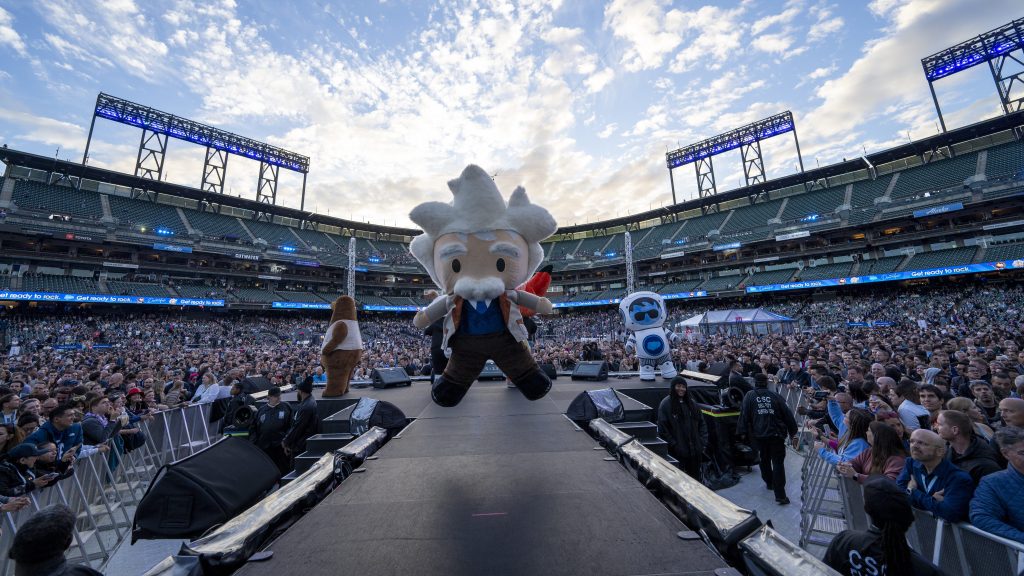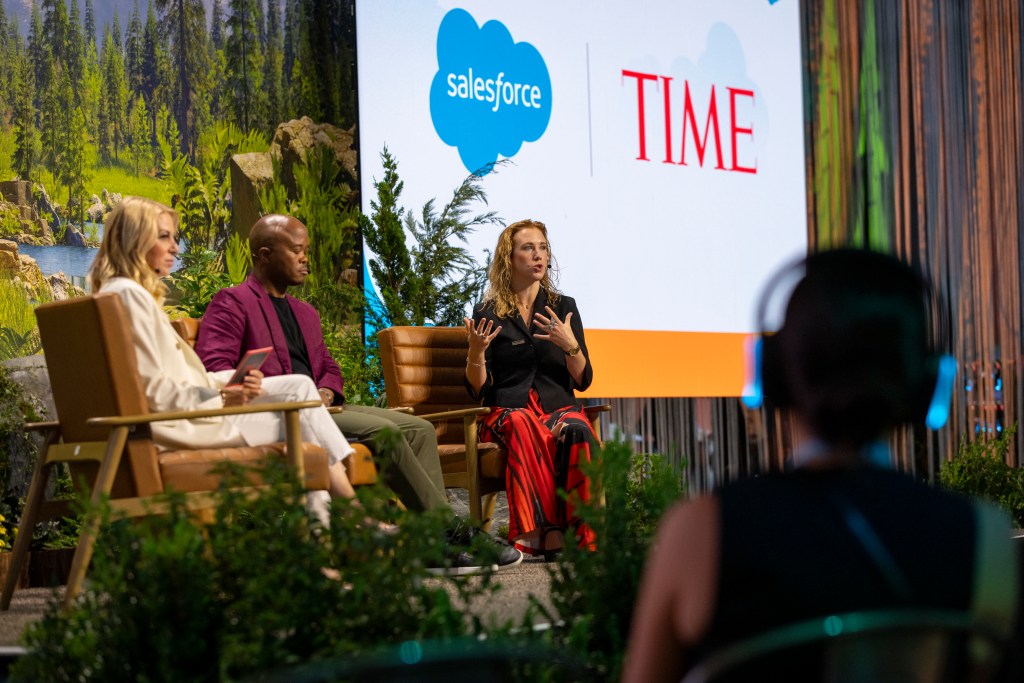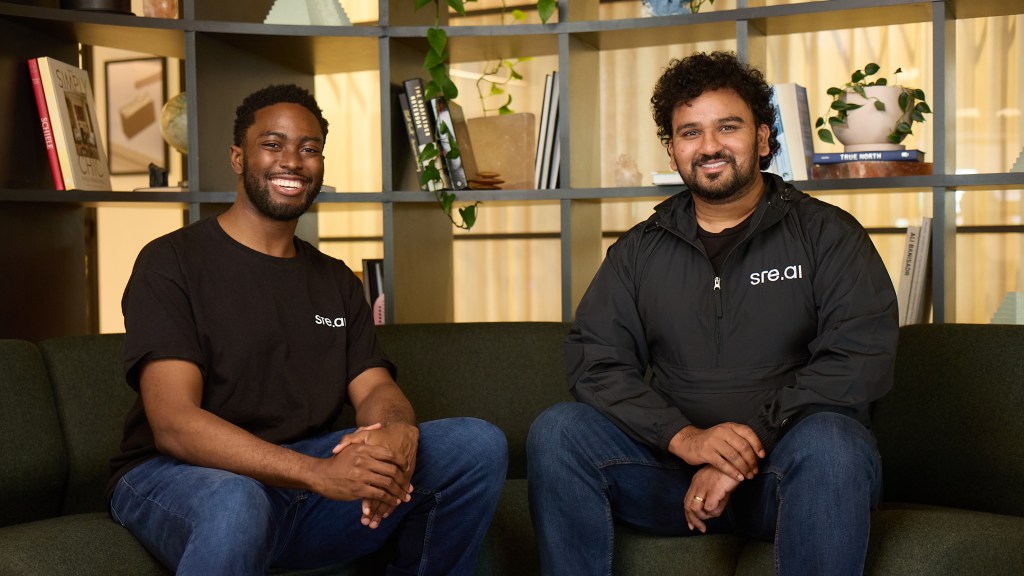Salesforce Ventures at Dreamforce: 6 Things We Learned
Dreamforce 2024 was a wealth of knowledge. Here were our key takeaways.
Dreamforce 2024 was many things — a celebration of Salesforce and its customers, a bold leap forward into the age of agentic AI, and an opportunity for Salesforce Ventures to triple down on our investment in AI. But more than anything, Dreamforce was a wealth of knowledge.
Over the course of three days, our team had the opportunity to hear founders, CTOs, and AI researchers share their latest breakthroughs and challenges.
A few key themes emerged.
In this blog post, we’ll unpack the six most interesting insights we learned at Dreamforce, and what each one means for startups and enterprises innovating in the AI era.

1. It’s Still Early For AI
While it may feel like generative AI has been in our lives for some time now, in actuality most businesses are still in the early stages of implementing AI into their products and services. Vipul Ved Prakash, CEO of portfolio company Together AI, described the current state of play during the “Demystifying AI” session:
“Last year, most large enterprises were asking what their generative AI strategy should be. More recently it’s changed. A large telco we met with recently had their data and benchmarks for an agentic system already organized. So it’s becoming more tangible in terms of how to build and apply these systems in products. But it’s still concentrated around early adopters and tech-forward organizations.”
Organizations that start building out their AI strategy today will still be ahead of the curve. However, the longer your team waits, the harder it’ll be to catch up.
What founders can do:
- Discuss with your team areas of the business that could benefit from generative AI,
- Research leading open and closed source models that best fit your business needs,
- Experiment with a handful of models and applications and share successes and roadblocks with your org.
2. AI is Becoming a Workflow Wizard
One of the key themes of Dreamforce 2024 was the transition from AI that can only perform singular tasks to AI that can complete entire workflows autonomously and accurately. Richard Socher, CEO of portfolio company You.com, put a timeline on this progression during the “Innovating at the Frontier of AI” panel on Tuesday:
“In the next two years, we’ll see AI agents automating entire workflows, not just tasks.”
This vision aligns with Salesforce’s new Agentforce platform, which moves beyond copilots to autonomous agents that can manage complex processes.
What founders can do:
- Identify one complex, multi-step workflow in your business (e.g., customer onboarding or quarterly reporting),
- Explore solutions to drive efficiencies, such as Tribble for RFPs, or Agentforce for industry-specific actions,
- Run a pilot project automating 2-3 steps of your chosen workflow with AI,
- Measure time saved and error reduction to build a case for wider implementation.
3. Data Silos Are AI Kryptonite
During our “Cutting Edge AI” roundtable hosted by Caroline Fiegel, portfolio company CEOs discussed challenges and opportunities around AI with cohorts of attendees, then shared their takeaways with the broader audience. From these conversations, Rachit Kataria, founder of portfolio company Centralize, shined a light on how companies trying to implement AI struggle with data silos:
“Your data has to be in one place for AI to work. There needs to be everything in one central view, otherwise no actions can happen.”
Having one central data repository makes it easier for AI to pull insights from various sources, which can unlock more bespoke customer experiences.
What founders can do:
- Conduct a data audit across departments to identify all data sources,
- Create a data catalog listing where each type of data is stored,
- Implement a data integration tool, such as Salesforce Data Cloud, to connect key data sources.
4. Ethical AI Isn’t a Feature – It’s the Foundation
The “Future of Enterprise AI” panel featured Daniela Amodei, co-founder Anthropic, in conversation with Salesforce co-founder and CTO Parker Harris and TIME Editor-in-Chief Sam Jacobs. As industry leaders in ethical AI development, Daniela emphasized that startups hoping to sell to the enterprise must prioritize trust and safety from the outset.
“You need to understand the trust and safety needs of enterprises and how they think about privacy and security. You can’t tack safety or ethics on after the fact.”
This focus on ethics aligns with what we hear from CxO’s in our network around the need for accuracy and reliability. Values drive value.
What founders can do:
- Form an AI ethics task force with representatives from different departments,
- Develop a checklist of ethical considerations for AI projects (e.g., bias, privacy, transparency),
- Implement regular accuracy audits for your AI systems.
5. AI Can Democratize Creative Expression
In his fireside chat with Salesforce Chief Design Officer Kat Holmes, Cristóbal Valenzuela, CEO of Runway, explained how AI is democratizing creative expression:
“The interesting thing about this radical new tech is it allows a broader audience to create art. Historically, too many people who wanted to tell stories were constrained because of the technology. They can now use tools like Runway to tap into the creative part of their brain.”
Every brand must tell a story and AI tools like Runway can create exciting new opportunities for them to do so efficiently and at scale.
What founders can do:
- Explore AI tools for creative work like Runway, Typeface, and Eleven Labs,
- Set up an internal channel for sharing outputs and hacks,
- Encourage your creative teams to engage with these tools in their work and report back their wins and roadblocks.
6. AI’s Environmental Impact Cannot Be Ignored

The “Building a Blueprint for Sustainable AI” panel featured portfolio leaders Dr. Sasha Luccioni of Hugging Face and Peter Swartz of Altana AI. During the panel, Sasha urged users to be responsible when picking the AI models to leverage in their business:
“Some models emit 1,200x more carbon than others for the same task. And some of the most climate-positive models are pretty efficient and can run on your laptop. We should be making the climate-positive models the most prominent.”
Everyone involved in the production, deployment, and utilization of AI must be cognizant of the environmental cost and push for more sustainable usage of the technology.
What founders can do:
- Use tools like MLCo2 to measure the carbon footprint of your current AI models,
- Implement a “green AI” policy that prioritizes efficient models in procurement,
- When evaluating AI models or services, prioritize those that demonstrate energy efficiency and lower carbon footprints.
- Consider tools like Hugging Face Transformers’ Efficient Inference Mode that focus on model efficiency.
- Partner with cloud providers that use renewable energy for their data centers.
The Road Ahead
Dreamforce was a watershed moment for Salesforce Ventures: we expanded our investment in AI to $1B, we featured dozens of portfolio company leaders on panels, roundtables, and workshops, and we got to meet face-to-face with inspiring entrepreneurs building at the bleeding edge of innovation.
Thank you again to all of our portfolio founders who attended, presented, or sponsored Dreamforce 2024. We’ll see you at Dreamforce 2025!
—
Salesforce Ventures portfolio companies earn access to exclusive events like Dreamforce. To learn more about us, visit our website >>>











